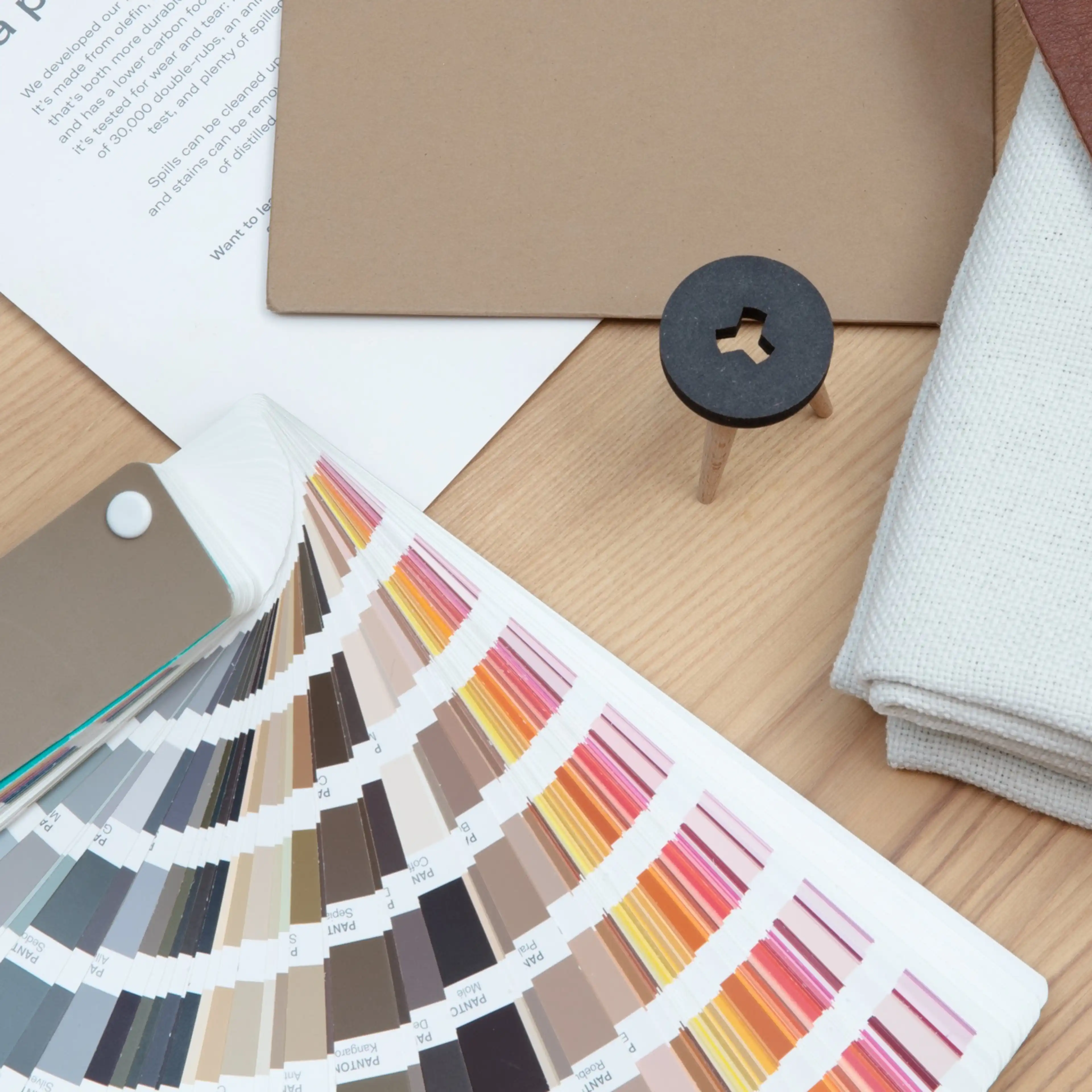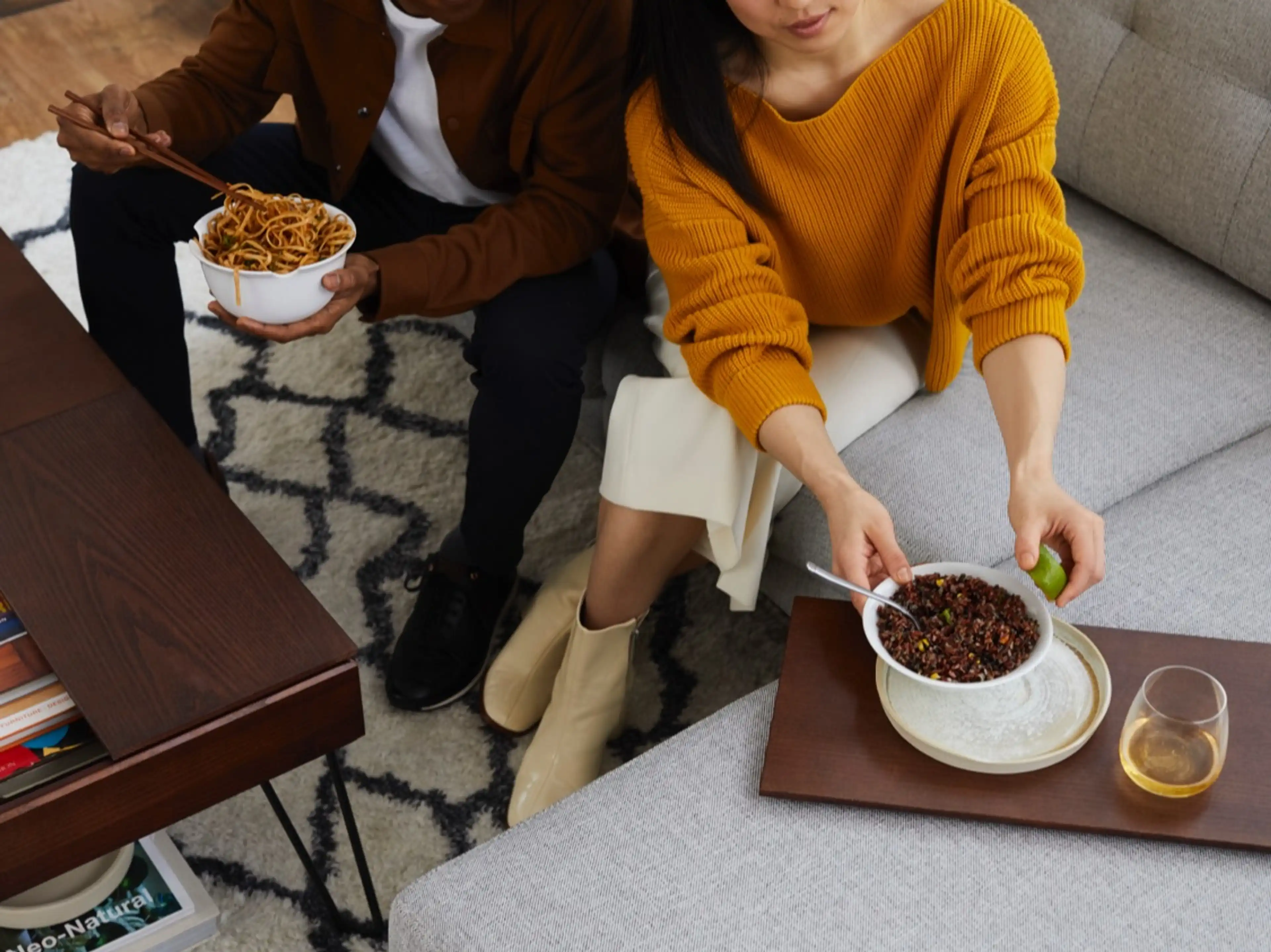How to work with wood finishes | Burrow
Cart
0 items
Your cart is currently empty
Stories, updates, and interviews from Burrow

How to work with wood finishes
A practical guide to matching (or not matching) wood finishes
One of the most frequent requests at Burrow House — our flagship store in Manhattan, staffed by a wonderful team of design specialists — is advice on how to choose a wood finish. And it’s not surprise that people are so stressed about this! Whether you’re scrolling Pinterest or flipping through the pages of an interiors magazine, it feels like there’s this pressure to perfectly coordinate very last patch of exposed wood. We’re here to tell you that’s not the case.
In fact, when we work with professional stylists and interior designers, whether on the set of a photoshoot or in helping a customer decorate their home, we often discover a more eclectic palette looks the best! But, to make it easier, we distilled the art into a few simple rules for you.
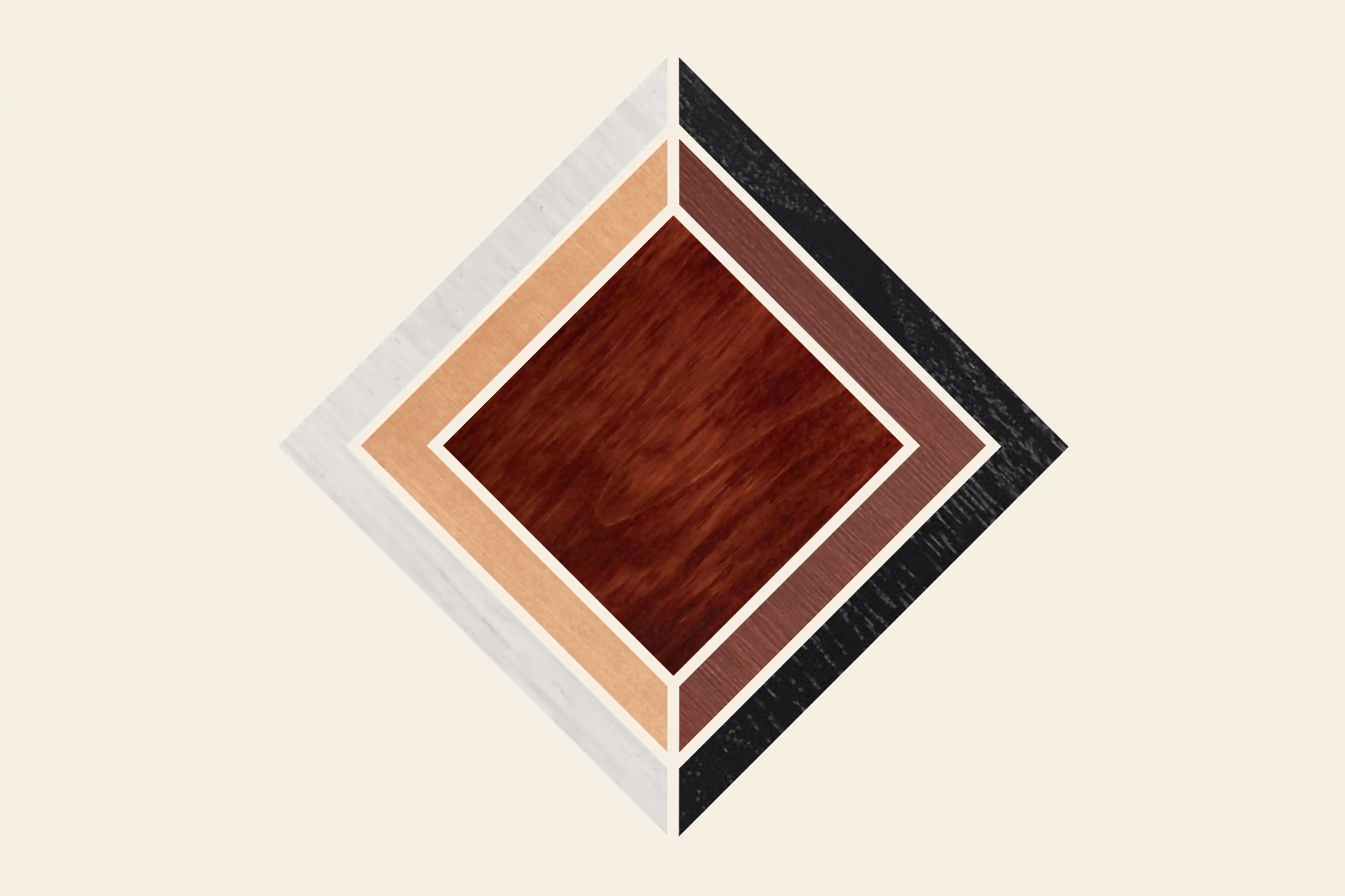
1. Stick with one side of the spectrum
Wood is, as you may be aware, a natural material. And nature is defined by variety and little imperfections. When we incorporate wood into our material palette, we want to take advantage of that variety — but we don’t want to create harsh contrasts. Some wood types and finishes sit at the middle of the spectrum, between light and dark, and these can work basically anywhere. Feel free to mix a bit of cherry in with your lighter maple and birch. Or go the other direction: that same medium-toned cherry will balance beautifully with a dark, sultry walnut or mahogany. Just stick with one side of the spectrum, mostly light or mostly dark, and you’ll be all set.
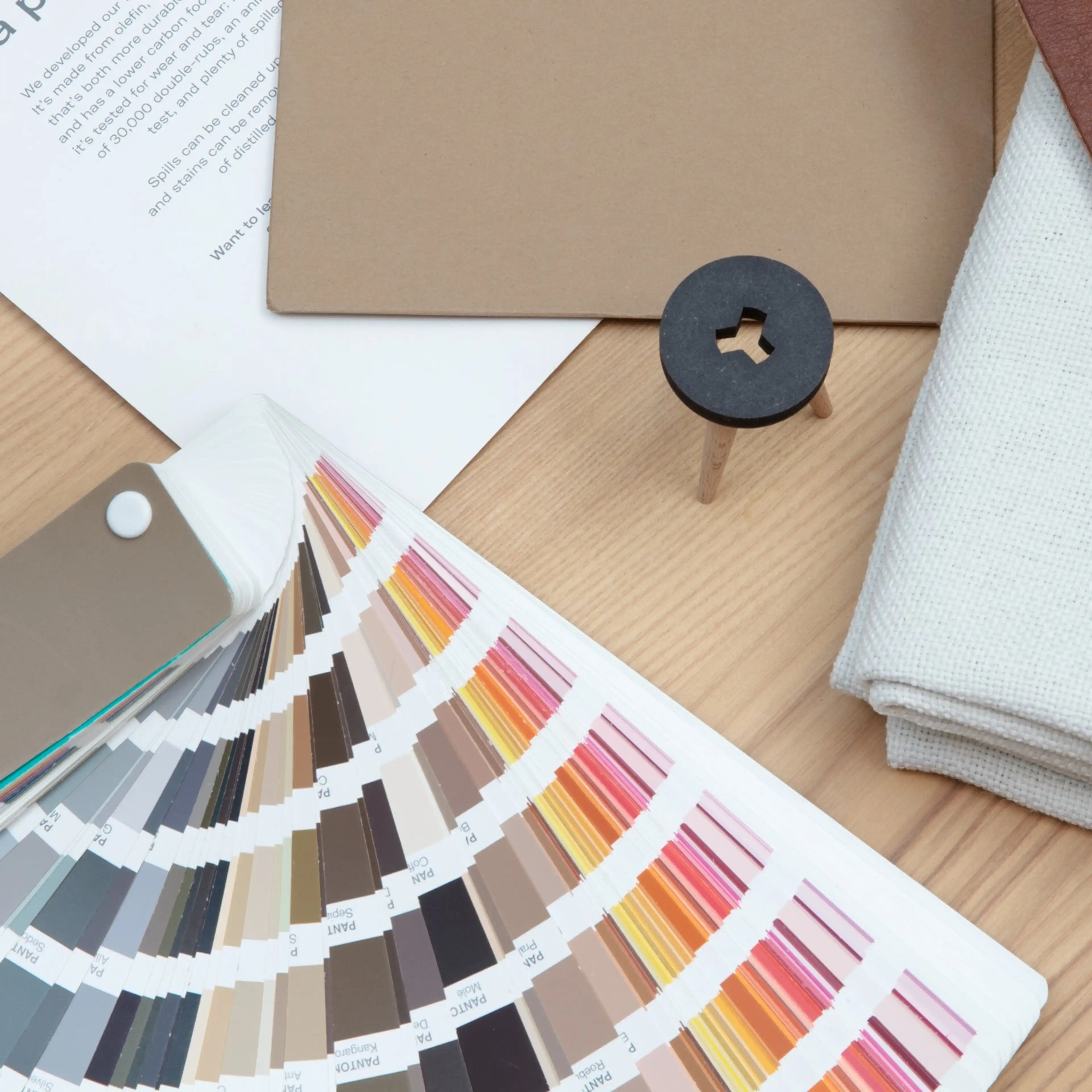
2. Consider the rest of your color palette
Wood is, as you may be aware, a natural material. And nature is defined by variety and little imperfections. When we incorporate wood into our material palette, we want to take advantage of that variety — but we don’t want to create harsh contrasts. Some wood types and finishes sit at the middle of the spectrum, between light and dark, and these can work basically anywhere. Feel free to mix a bit of cherry in with your lighter maple and birch. Or go the other direction: that same medium-toned cherry will balance beautifully with a dark, sultry walnut or mahogany. Just stick with one side of the spectrum, mostly light or mostly dark, and you’ll be all set.
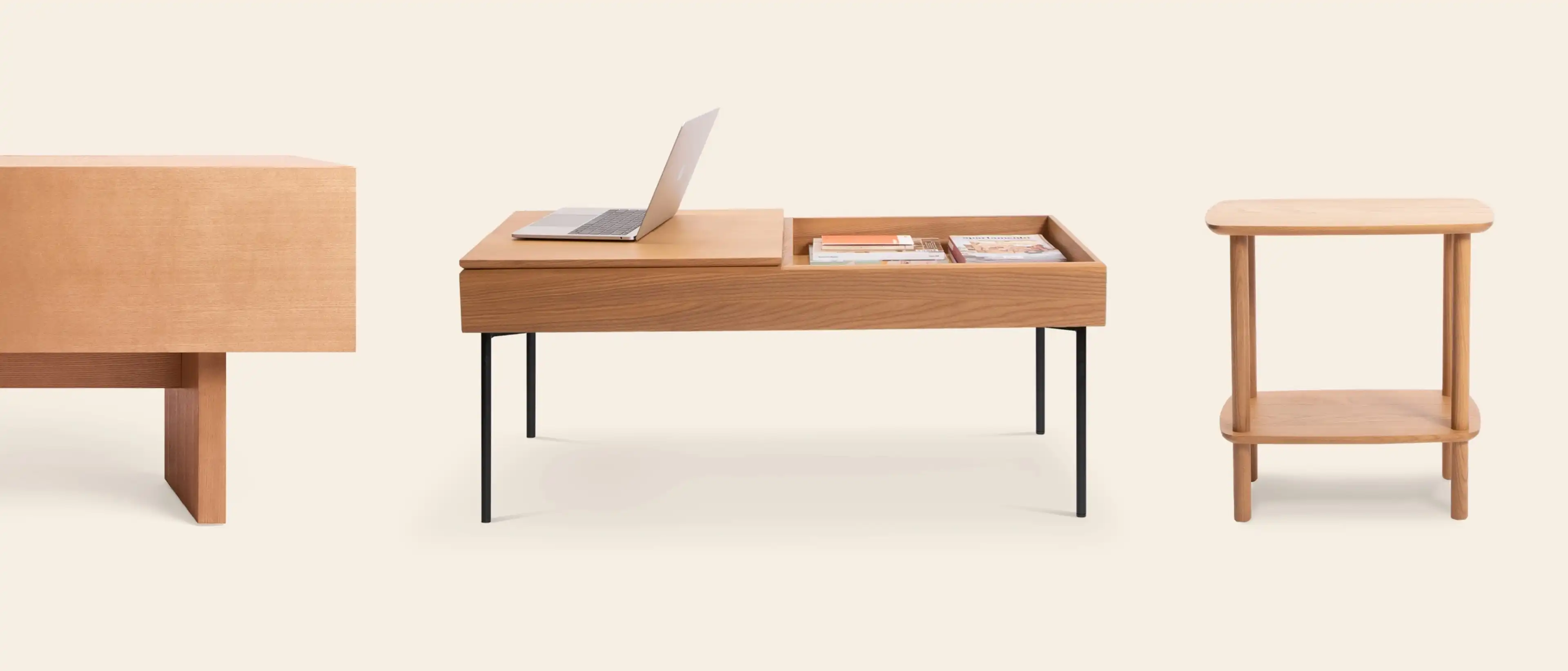
These three products, each from a different collection, all use the same oak wood finish.
3. Buy in matching batches
The easiest way to get that subtle variation we talked about, without going overboard with different finishes, is to buy furniture in batches from the same brand. Of course, we’d be so very pleased if that were us, but it holds true no matter where you shop. You will, in all likelihood, have a few existing wood tones in your room, whether that’s the flooring or another piece of furniture. But our entire catalog uses the same types of wood and finishes across products — so you know that anything that’s described as “Oak” from Burrow will match any of our other “Oak” finished. That means, even if your existing wood situation has some variety, you won’t rock the boat by buying, say, some Index Wall Shelves alongside your Carta Credenza. And even if you aren’t trying to replace everything you own all at once, don’t fret: these finishes are here to stay.


